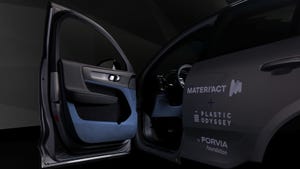The V-type screen changer from the Kreyenborg Group (Munster, Germany) already is established in a number of commercial extrusion lines processing PET, and now the first of these filters is in operation in a polyolefin line. The customer, a sheet processor, relies on the screenchanger to help it meet quality standards as it directly extrudes shredded HDPE blowmolded articles into thermoformable sheet for the automotive industry at a rate of 900 kg of HDPE processed/hour.
February 24, 2010
The unnamed processor is using recyclate from production and post-consumer waste streams. In the V-type screen changer the melt is guided onto four screen cavities with a filter area in this case of 244 cm2 each. The melt, leaving the extruder, is split into four melt streams. After filtration these melt streams are brought together again in the heated steel housing. Each screen cavity is equipped with a backflush pestle that conveys any contaminants to the outside. The backflush is started fully automatically when it reaches a predefined pressure differential, which represents the pollution degree of the screen pack. Due to the power of the backflush, flushing need not be as frequent as with conventional systems, according to the manufacturer.
Screens may be changed during production; the melt flow is guided through the screen cavities, which remain in the system. Thus the screen changer does not only work independently of the system pressure, but also absolutely continuously. —Matt Defosse
About the Author(s)
You May Also Like


